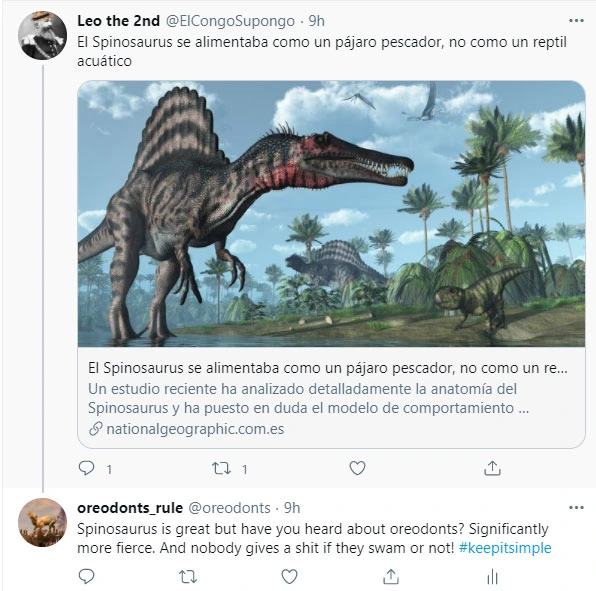Public Relations for Extinct Animals
INFOSCI THOUGHT LEADERSHIP

In this thought leadership piece, College of Information Science assistant professor of practice, paleontologist and science writer Meaghan Wetherell asks us to give a little more love to oreodonts, which are featured in a new documentary titled 'Forgotten Bloodlines'.
Image courtesy Digital Duck and Forgotten Bloodlines.
Let's give a little more love to oreodonts, and while we're at it, a little more love to the importance of scientific research given the misinformation crisis of our modern world.
In the last few years I’ve found myself in the bizarre position of being a public relations representative for a group of extinct animals.
My clients are known as oreodonts. They looked sort of like pigs but were more closely related to camels (though their very short necks might not be very convincing on that front). Their evolutionary hobbies included some of them randomly living in trees, others stealing burrows from tortoises and a few that seemed to particularly enjoy biting one another in the face.
Oreodonts are extremely common—you can buy their fossils online for under $50, and their skulls roll out of the hills so often in South Dakota that geologists call them “Badlands potatoes.” They dominated North America for 40 million years and have been found in rocks ranging from Canada down to the Panama Canal.

College of Information Science Assistant Professor of Practice Meaghan Wetherell with one of her mini cows.
Despite that, I am one of only a handful of people who works on them.
Through extensive focus group testing (a.k.a. bothering people at conferences) I’ve found that one of the major sticking points is that people kind of just find oreodonts… boring. Oreodonts in museums are often relegated to the role of “animal that another, bigger, cooler animal is eating.” By reading this far you may now know more cool facts about oreodonts than most PhD-carrying paleontologists!
Even worse, nobody knows what to call them. I know that might seem a little silly, but when looking at a group of fossils you need to know how many species you’re looking at. A set of 10 oreodonts could be anywhere between one and 10 different species, depending on which set of naming conventions you follow. The papers describing these species are also largely from the mid 1900s, which makes them very long and somewhat painful to read. Also, poorly xeroxed.
So boring + complicated = very little research.
As a person who loves these animals, this simply will not stand. There are so many unsolved questions about this group—why they went extinct, why they kept evolving trunks, and why we have 100 oreodont brain imprints rolled up together in a spot in Texas the size of a football field. Oreodonts can’t possibly be that boring if they were accumulated by ancient Texan serial killers!
There are way too many interesting things about oreodonts for me to do all that research myself, which is why for the last decade I have concentrated a lot of effort on building public enthusiasm about oreodonts. Some of these attempts have been more successful than others. For example, a new documentary called Forgotten Bloodlines will feature the gross, face-biting oreodont called Promerycochoerus in all of its oozing, bloody glory. I’m very excited to hear Nigel Marven talk about how many of those animals have broken and partially healed cheekbones.
Other attempts have been less successful, like when I built a Twitter bot that would respond to comments about Spinosaurus with facts about my objectively more interesting animals. (I got banned immediately.)

Image courtesy Meaghan Wetherell.
Silly though these efforts might seem, they are working. There have been more papers published in the last few years about oreodonts than we have seen in decades. For the moment, most of these papers have focused on figuring out the naming issues. But I’ve heard from people working on other topics too—like that whole extinction issue, for example.
The key to a successful PR campaign is telling an interesting story. As anyone who has read a tabloid can agree, that’s true even if your PR involves slandering your subject. For example, an upcoming paper of mine strongly implies that one oreodont may have pooped in groups. Is that a charming piece of information from the perspective of my subject? Perhaps not, but it is certainly bizarre enough to get a bit more attention and interest.
While my PR campaign has focused on increasing public awareness of an understudied fossil, there are plenty of reasons to conduct scientific PR on other, more serious topics. Given the misinformation crisis our modern world faces, I strongly encourage other scientists to more actively promote the importance of their research.
All scientists got into their subject because they found it fascinating. It’s important to make sure other people (scientists or otherwise) find that fascinating too.
College of Information Science Assistant Professor of Practice Meaghan Wetherell holds a PhD in Geology and a bachelor’s degree in biology, but has done research in archeology, paleontology, sedimentology, sociology and other fields. Her primary research interest is the spatiotemporal drivers of extinction and diversification in mammals. She teaches courses in R, statistics, data visualization, educational game design and science communication. In addition to her academic work, she writes for PBS and other YouTube channels and has appeared on National Geographic. For more information, visit her website at www.meaghanwetherell.com.

